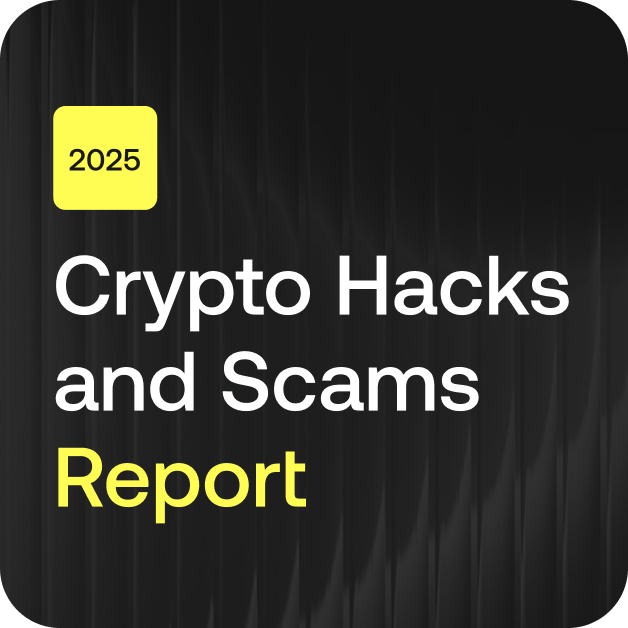This report by Crystal Blockchain analytics reviews the use of bitcoin by darknet entities. The report analyzes darknet interactions with exchanges and other entities throughout the first quarter of 2020 and compares it to historical darknet activity from the past three years.
Key Findings:
- The amount of bitcoin (measured in BTC) transferred between darknet entities and other entity types declined in Q1 2020 compared to the same period one year ago; however, the value of the amount of bitcoin transferred (measured in USD) grew by 65%.
- This is not just due to the increase in the USD value of bitcoin from 2019 to 2020. The amount of money being transferred by darknet entities is still growing, and they are continuing to use bitcoin as a medium of transport. The mass adoption of bitcoin, as well as its ease of use and popularity, is a contributing factor as well.
- In Q1 2020, there was a rapid growth in the amount of bitcoin sent from darknet entities to mixers. During that same period, the amount sent in bitcoin to exchanges that require verification was reduced – seeming to indicate a reduction in the use of cryptocurrency exchanges for criminal and darknet activities in favor of more anonymous services like mixers.
- The share of bitcoin sent from one darknet entity to another also grew in Q1 2020. It is possible that darknet users are trying to hide their bitcoin flow inside of the darknet, avoiding detection of their activities. This also encourages darknet services to cooperate and grow their revenue internally.
Definitions
Exchanges with verification requirements are exchanges with mandatory Know Your Customer (KYC) procedures, that will not allow the withdrawal of cryptocurrency or fiat money without confirmation of identity.
Exchanges w/o verification requirements are exchanges that allow the withdrawal of cryptocurrency or fiat money without any mandatory KYC procedures.
Mixers are services for mixing cryptocurrency funds from different sources with other funds, in order to obscure the trail back to the original source.
Darknet entities are entities that operate via the darknet and offer illegal services or goods in exchange for (mainly) cryptocurrency.
Other entity types are entities such as payment processors, gambling services, illegal services, miners, marketplaces, online wallets, ransom extortioners, scams, stolen coins, and/or others.
Introduction
The immutability and transparency of the Bitcoin Blockchain enables us to identify suspicious activity on a global level, an effort that would be impossible with fiat payments.
Guidelines and regulations have been laid out by the Financial Actions Task Force (FATF) and the European Union (EU) for exchanges, online wallets, and other Virtual Asset Service Providers (VASPs) in order to prevent illicit activity involving cryptocurrencies. These regulations have significantly contributed to the identification of fund source “purity” and relationships to darknet entities such as gambling sites, illegal marketplaces, and more.
The public nature of transactions on the blockchain, paired with these digital asset regulations, makes it even easier to identify suspicious activities through analytical tools like Crystal Blockchain.
This report represents both direct and indirect bitcoin transactions between clusters owned by darknet entities, as well as non-darknet and unidentified entities. The report includes transactions between darknet and other types of entities, as well as unknown intermediate addresses (i.e., addresses that do not belong to any identified services.)
This analytics report was compiled using the Crystal Blockchain platform All Connections feature.
Notes:
The report compares growth across two metrics – growth in amount of bitcoin (actual) and growth in value (measured in USD).
For clarity, we use USD and $ to indicate overall value, and use numbers only when indicating the amount of bitcoin (by number of coins) observed.
General Analysis of Darknet Entity Interactions
(Q1 2017 – Q1 2020)

Q1 2020 saw a drop in amount of bitcoin both sent and received by darknet entities – a 22 % and 26 % drop, respectively, compared to Q1 2017.
The total amount received by darknet entities decreased from 64k bitcoin in Q1 2019 to 47k bitcoin in Q1 2020.
The total amount sent by darknet entities also decreased from 64k bitcoin in Q1 2019 to 50k bitcoin in Q1 2020.
These drops in bitcoin received and sent could be due to the growing popularity of altcoin usage by darknet entities.
However, if we consider the amounts in USD, we see that darknet entities received and sent an increased amount of money — from $384m in Q1 2019 to $411m in Q1 2020. This is partly explained by the growing capitalization of bitcoin, as well as further mass adoption of bitcoin. As it becomes increasingly easier to use cryptocurrency, the popularity of this payment method is steadily increasing.
Analysis of Entity Types That Received Bitcoin from Darknet Entities
(Q1 2017 – Q1 2020)

Darknet entities often solicit and use exchanges without strict verification requirements (likely to avoid KYC/AML restrictions). The share of all bitcoin received by darknet entities from such exchanges decreased from 62% in Q1 2019 to 45% in Q1 2020.
However, the share of bitcoin received from exchanges with verification requirements increased to 29% in Q1 2020 (up from 22% the previous year). This is likely due to more new exchanges implementing verification procedures due to requirements from the FATF. Users prefer these exchanges to ones that don’t follow FATF requirements.
The share of bitcoin sent from one darknet entity to another (i.e., all transactions between different darknet entities) also grew from 10% in Q1 2019 to 19% in Q1 2020 – indicating overall growth in darknet revenue and cooperation.
This share growth could also indicate that darknet users are trying to hide their bitcoin flow inside of the darknet itself, avoiding the risk of having their activities unveiled by entities (like exchanges) that have implemented FATF requirements.
Analysis of Entity Types That Sent Bitcoin to Darknet Entities
(Q1 2017 – Q1 2020)

The most notable change in how darknet entities send bitcoin is the growing use of mixers.
In Q1 2019, only 1% of bitcoin was sent to such services – in Q1 2020, it rose to 20%. In comparison, the share of bitcoin sent to exchanges with verification requirements fell from 24% in Q1 2019 to 13% in Q1 2020. This is likely in response to increased regulation and verification processes for exchanges, leading darknet bitcoin owners toward other services to obfuscate the source of their coins.
Interestingly, entities from the darknet also sent a lower share of bitcoin to exchanges without verification requirements. In Q1 2019 it was 60%; in Q1 2020 it dropped to 46% of all bitcoin. There are several possible explanations for this drop, but exchanges without verification requirements were likely used less and substituted with mixing services.
Darknet Interactions with Exchanges with Verification Requirements
(Q1 2017 – Q1 2020)

The amount of bitcoin received by darknet entities from exchanges with verification requirements was similar in Q1 2020 and Q1 2019 (approximately 9,000 bitcoin). However, across this same time period, the amount of bitcoin sent by darknet entities to exchanges with verification requirements significantly dropped from 14,073 total bitcoin to 5,455 total bitcoin.
The amount of bitcoin sent (in USD) from the darknet to exchanges with verification requirements also dropped, from $53m in Q1 2019 to $44m in Q1 2020. This is likely due once again to the increased KYC/AML requirements at these exchanges.
Important to note is that darknet entities received twice the amount of bitcoin (in USD) from exchanges with verification requirements in Q1 2020 ($73m) compared with Q1 2019 ($36m).
Darknet Interactions with Crypto Mixers
(Q1 2017 – Q1 2020)

Bitcoin mixing services continue to grow in popularity thanks to their use by darknet entities.
The amount of bitcoin sent to mixers by darknet entities rose significantly this year – from 790 total bitcoin in Q1 2019 to 7,946 bitcoin in Q1 2020. The same growth was also observed in USD – an increase from $3m in Q1 2019 to $67m in Q1 2020. This indicates a rapid adoption of crypto mixing services by darknet entities.
The amount of bitcoin received by darknet entities from mixing services also increased three-fold, from 106 bitcoin in Q1 2019 to 288 bitcoin in Q1 2020. This equates to significant increase in USD received from these services – close to $2 million USD in Q1 2020 compared to the same period in Q1 2019 ($400,000 approximately).
From this analysis, it seems that exchanges with verification requirements are becoming less popular as a way to withdraw bitcoin from darknet entities, while mixers are becoming more popular for withdrawing from darknet entities.
Darknet Interactions with Other Darknet Entities
(Q1 2017 – Q1 2020)

Darknet entities are sending more bitcoin amongst themselves as well. The sum of transferred amounts between darknet entities grew significantly (looking at amount of bitcoin and value in USD) between Q1 2017 and Q1 2020.
In Q1 2019, bitcoin transfers between darknet entities amounted to 5,478 bitcoin, while in Q1 2020 it was 6,722 bitcoin. The amount measured in USD was even more notable, increasing from $21m in Q1 2019 to $55m in Q1 2020 – more than double the amount. This seems to indicate the darknet ecosystem is either growing in size or its revenue streams are becoming interconnected (or both).
Conclusion
Bitcoin is available to anyone in the world to use. This means that, while it is increasingly a place for legitimate business, it may be used for malicious and criminal activities as well.
Unfortunately, despite our observations that the amount of bitcoin being sent and received by darknet entities has been decreasing since 2017, the overall value exchanged (in USD) continues to increase. Also worrying is the fact that darknet entities continue to increase the amount of bitcoin (in actual bitcoin and USD value) sent amongst themselves. These statistics indicate that bitcoin continues to be a financial tool for darknet entities.
While more exchanges implement the FATF requirements, darknet users are trying to avoid the risk of unveiling of their activity by those exchanges. To veil darknet activities, they started to prefer mixing services to exchanges for withdrawal of cryptocurrency.
What is reassuring, however, is that these activities are easy to monitor and identify with analytical tools like Crystal. As a result, the impact of the strong regulations enacted by the FATF and the European Union to fight these illicit activities is already apparent. We expect to see even more significant changes in these patterns throughout 2020 as a result of these efforts.
See the Crystal Blockchain platform in action. Get a demo today.




